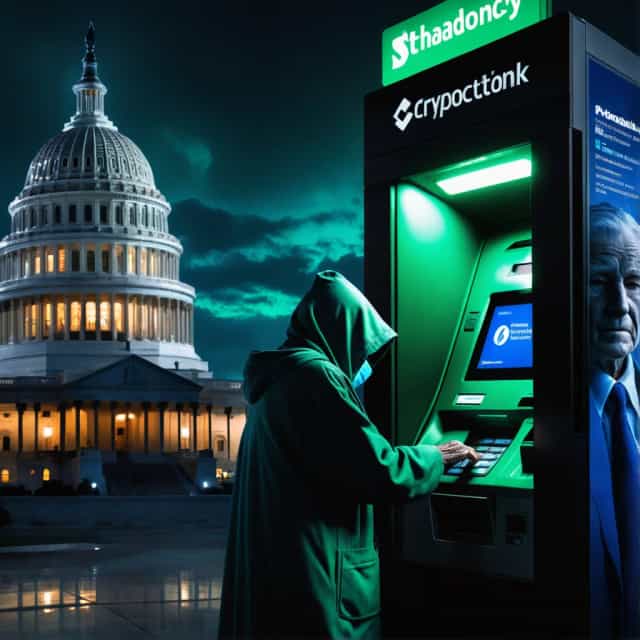
출처: Block Media
Wall Street Declines Following Powell's Warnings and AI Investment Doubts
U.S. markets faced a setback on Wednesday as Federal Reserve Chair Jerome Powell's cautionary remarks and rising skepticism about artificial intelligence (AI) investments unsettled investors. The Nasdaq Composite dropped nearly 1%, while the S&P 500 halted a three-day winning streak, reflecting mounting economic concerns.
On October 23, the S&P 500 fell 0.55% to close at 6656.92 despite hitting an intraday record high earlier in the session. Late-session selling pressure eroded earlier gains. The Nasdaq Composite declined 0.95% to 22,573.47, while the Dow Jones Industrial Average lost 88.76 points, or 0.19%, ending the day at 46,292.78.
Powell Flags Inflation Risks and Elevated Stock Valuations
The downward market momentum was exacerbated after Powell's speech at an event in Rhode Island, where he signaled caution regarding upcoming interest rate decisions. "In the short term, inflation risks tilt higher, while employment exposure leans lower," Powell stated, emphasizing the complexities of navigating current economic challenges. He further cautioned, "In an environment of two-way risks, a risk-free path does not exist."
During the event's Q&A session, Powell highlighted concerns over stock valuations, stating, "By several metrics, equities appear somewhat overvalued." This added pressure to an already jittery market, as investors speculated that the Federal Reserve might scale back the pace of expected rate cuts. Last week's initial rate reduction had fueled optimism, but Powell's remarks tempered market sentiment.
Looking ahead, the August Personal Consumption Expenditures (PCE) price index, set for release on Friday, is now viewed as a pivotal indicator for shaping future monetary policy. Additionally, preliminary readings for manufacturing and services purchasing managers' indexes (PMIs) revealed rising input costs alongside increased new orders, signaling persistent inflationary pressures. These factors further unsettled traders and intensified fears of prolonged economic strain.
AI Investment Optimism Fades as Nvidia and Oracle Decline
Investor confidence in AI investments took a hit, contributing to broader market weakness. Nvidia had surged the day prior after announcing a $100 billion commitment to OpenAI, sparking enthusiasm in the tech sector. However, divergent market views quickly emerged, triggering a sell-off amid concerns about irregular cash flow patterns between suppliers and AI developers, coupled with the industry's escalating energy demands.
Gil Luria, Head of Technology Research at D.A. Davidson, commented on CNBC, “Initially, Nvidia’s OpenAI investment announcement was interpreted positively. But investors quickly questioned whether OpenAI overextended beyond its promised scope, leaving Nvidia in the position of a ‘last resort’ investor.”
This skepticism dragged Nvidia down by 2.8% on Wednesday. AI-linked stocks Oracle and Amazon also suffered losses, with Oracle falling 4.4% and Amazon retreating modestly. In contrast, Micron Technologies bucked the trend, gaining 1.58% in after-hours trading following better-than-expected Q4 earnings.
Separately, Lithium Americas saw an extraordinary surge of up to 90% in after-hours trading, driven by reports of potential U.S. government involvement. Sources revealed that the Trump administration might acquire a 10% equity stake in the company as part of negotiations linked to the Department of Energy's $2.26 billion loan adjustment. This move signals a strategic push to strengthen domestic energy and resource capabilities.
Gold Hits Milestone Amid Rising Inflation Hedge Demand
As inflationary concerns and economic uncertainty grip markets, gold prices skyrocketed to new record highs. Gold futures surged to $3,796 per ounce, driven by heightened demand for safe-haven assets. Investors now view gold as an attractive hedge against inflation, spurred by tempered expectations for aggressive Federal Reserve rate cuts.
Major investment banks, including Goldman Sachs and UBS, forecast continued upside for gold, projecting prices of $4,000 and $3,900 per ounce, respectively. Powell's cautionary tone regarding rate cuts has led market participants to anticipate key inflation data and corporate earnings reports as decisive factors for determining near-term market trends.
In summary, Wednesday’s market descent reflected a multifaceted blend of economic concerns. From Powell’s warnings about inflation risks and stock overvaluation to waning investor confidence in AI developments and rising gold prices, a complex interplay of forces has emerged, ensuring that the coming weeks will be pivotal for shaping market trajectories.










